Last Updated on September 9, 2023 by a Friendly Gardener
This stunning variety of heartleaf philodendron belongs to the Araceae family and finds its native habitat in the Caribbean and Mexico. Botanically named the Philodendron hederaceum var. hederaceum, it is appreciated for its heart-shaped foliage that is velvety to the touch together with an impressive vining growth habit. In fact, the Micans’ distinguishing characteristic from other heartleaf philodendrons is the velvety leaf surface. This plant’s popular name is the Velvet Leaf Philodendron.
Once this plant was rare, but recently has become easier to find although not everywhere. These are beautiful plants to showcase in hanging baskets or climbing on trellises or similar. Like other varieties of philodendron, the Micans are easy to care for and require very little maintenance. When it reaches maturity, it may stand about eight inches to a foot tall and grow vines two feet long.
Micans Plant Care
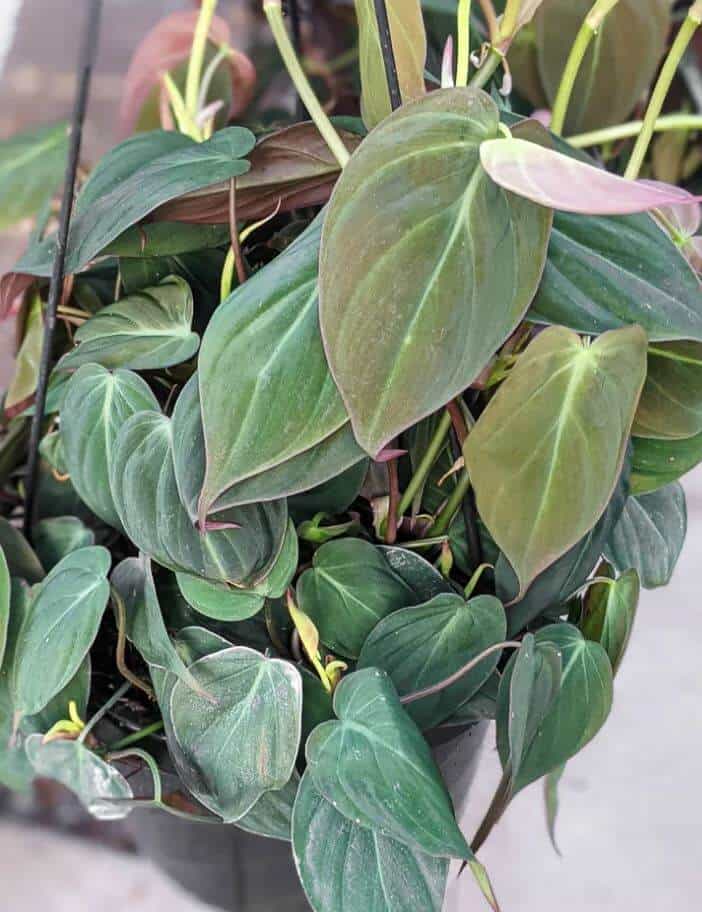
Micans benefit from well-draining soil, bright indirect light, and a consistent watering habit. In their native habitat, these plants will produce flowers, but indoors they will do so rarely. Blooms play a secondary role in the Micans’ impressive foliage. These plants can be cultivated outdoors in USDA hardiness zones 9b through 11.
Soil
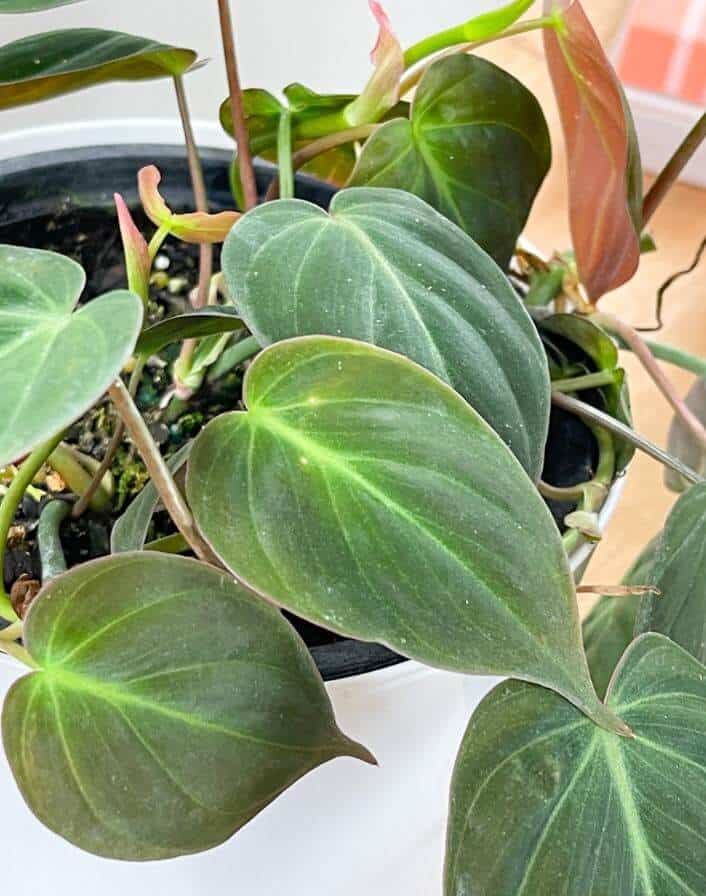
The Micans is a tropical aroid, so it needs a loose, well-draining soil bed that guarantees good aeration. It should be rich in organic matter like compost. The Micans will manage fine in quality potting soil but will thrive when placed in an amended soil blend that includes one part potting soil, one part perlite, one part orchid bark or similar, and one part coco coir or peat moss. Soil pH should be slightly acidic.
Light
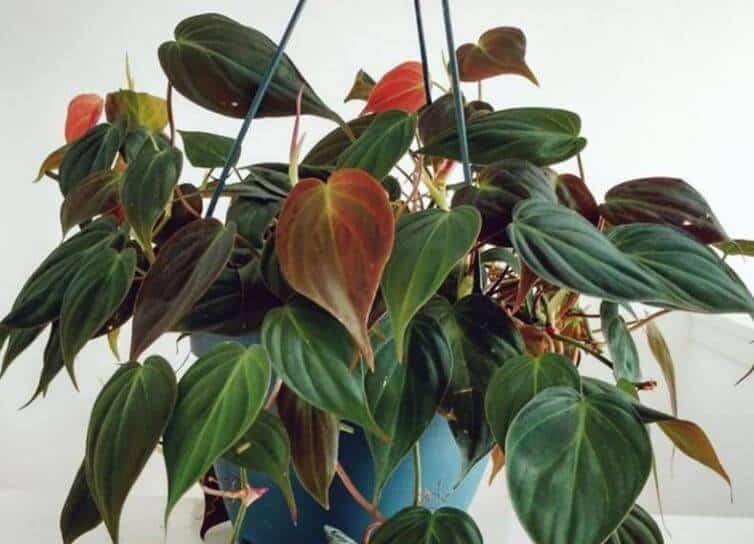
The Micans plant prefers indirect light that is bright to medium in intensity. It should not be placed in direct sunlight as this can scorch the tender leaves causing foliage to lose color and develop crispy borders. Light exposure influences foliage color. If your plant has a lot of light exposure, leaves will maintain a reddish or maroon color. In low-light environments, the foliage will remain green-hued. If placed on a windowsill, consider one with blinds or a sheer curtain, to protect the Micans from excessively intensive sunlight.
Water
The Micans plant should be watered only after the top three inches of the soil bed has dried out. If you forget to water, this plant will tell you it’s thirsty. Foliage will begin to droop and may begin to curl slightly inward. The Micans can develop root rot if left to sit in water, so avoid overwatering. Using tap water may contribute to salt buildup, so filtered water or collected rainwater would be a better choice.
Humidity
The Micans love humidity originating in the tropics. Generally, household humidity levels should be fine, but increasing humidity can facilitate its growth. Use a space humidifier or pebble tray underneath your plant to boost humidity. Also, grouping plants will aid in creating a microclimate conducive to your plant’s health. Misting will not improve humidity sufficiently long-term.
Temperature
Being that the Micans naturally grow in the tropics, it prefers warm climates and does just fine in indoor temperatures. It should not be exposed to cold, drafts, or airflow from vents, heating units, or air conditioners. The ideal temperature range measures from 65° to 75°F.
Feeding
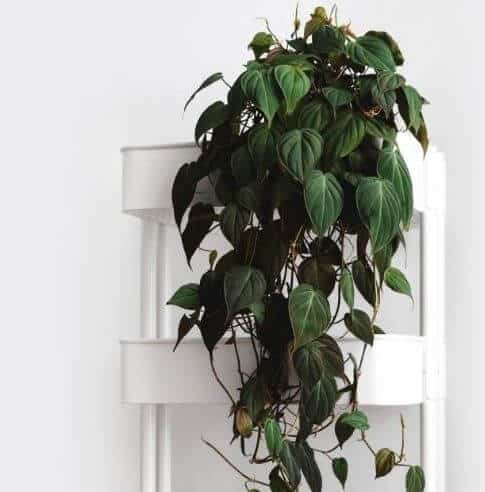
If you have planted your Micans in soil amended with lots of organic matter, you will not need to feed it. You can give it light feeding during the spring and summer seasons with a quality all-purpose green plant fertilizer.
Pruning
Pruning will help your Micans avoid becoming leggy. Due to its trailing growth habit, this can be a problem. Trim vines regularly to encourage the branching of stems. The best time of year to prune is during the growing season in sterilized gardening shears or scissors to prune particularly lengthy stems. Stem cuttings can be used for the propagation of your plant.
Philodendron Micans Propagation
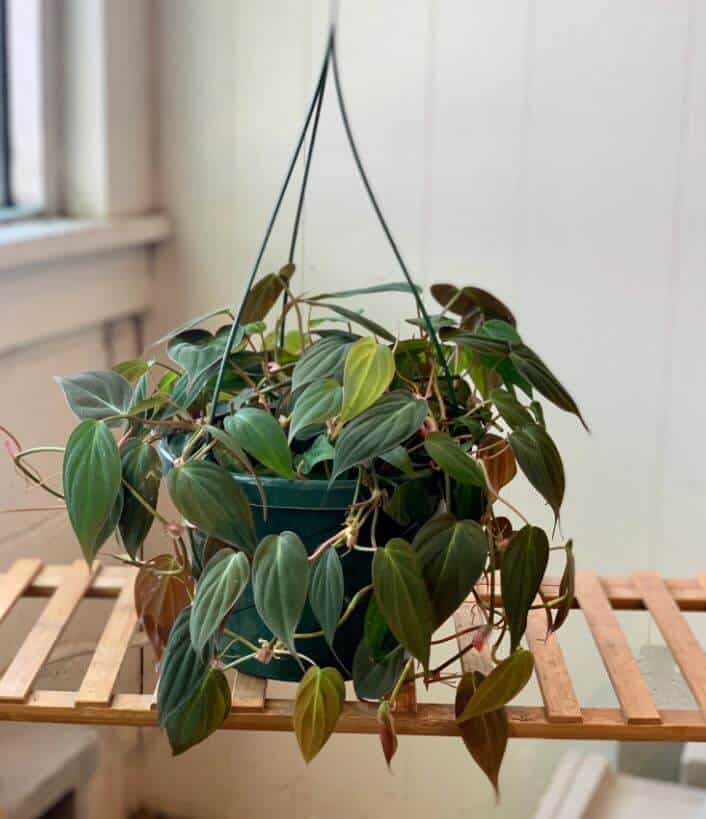
The Micans plant is easy to propagate with stem cuttings. To propagate:
- Cut stem sections from a healthy parent plant. Each cutting should have at least four leaves or leaf nodes.
- Remove the bottom two leaves from your stem cutting so their nodes remain exposed.
- Place the bare stems of your cuttings in a transparent jar or glass of water making sure that these remain submerged. Place the cuttings in indirect, but bright light.
- Watch water levels so that stems remain submerged always. After several weeks, roots should develop.
- When roots measure about an inch in length, you can move your cuttings to the soil. Moisten the soil before transplanting your new cuttings. For the first two weeks, the soil bed should remain moist but not soggy to facilitate the transition. Afterward, slowly transition your new plants to a normal watering schedule.
Pests and Problems
The Micans plant is susceptible to pests common to houseplants like mealybugs, aphids, scales, and fungus gnats. Examine your plant often for signs of infestations like cottony deposits in the case of mealybugs or waxy shell deposits from scales. Give your plant a good shower to remove pests and treat it with Neem oil spray or insecticidal soap.
The Micans is generally not a problematic plant, but if problems appear look to inadequate drainage, over or underwatering, or improper lighting.
If foliage begins to curl, your plant needs more water. If after watering, the Micans are still suffering, the root system may be to blame. Perhaps the roots are unable to absorb moisture. In this case, move your plant to water to stimulate new root growth.
Leaf drop may be due to natural aging especially if it is only occasional. If lots of foliage is dropping, your plant has most likely been underwatered.
Mushy stems indicate a problem with overwatering or with drainage. Check that drainage holes are not blocked and let the soil dry out at least three inches deep before watering again.
Philodendron Micans Toxicity
The Micans plant is toxic to family pets.

